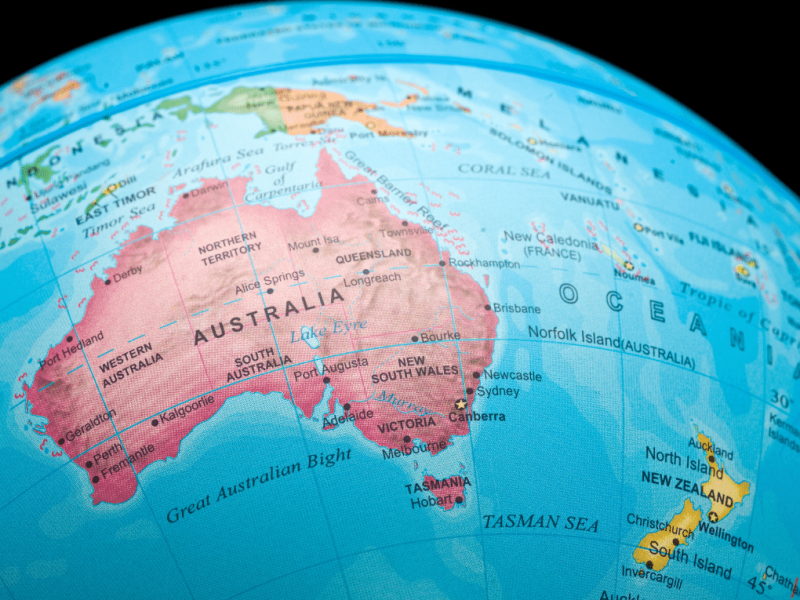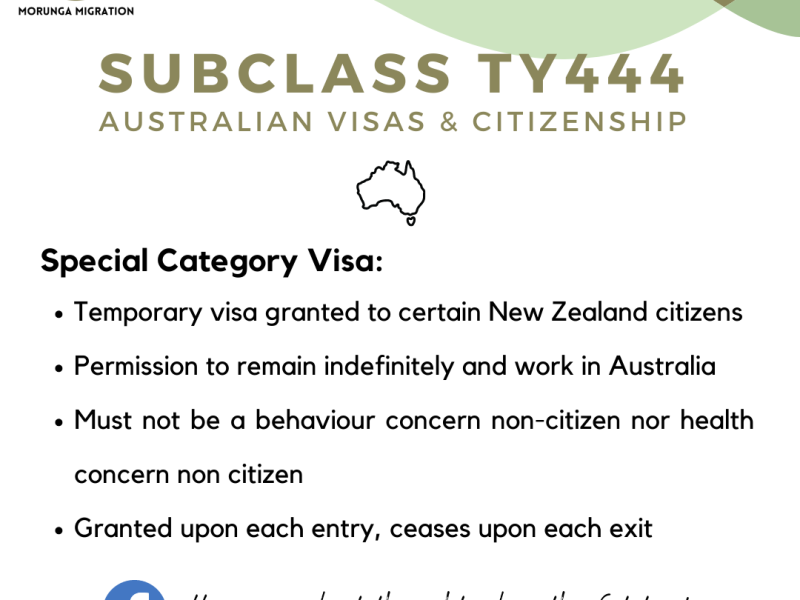Special Category Visa (SCV)
When the SCV, subclass TY444 was introduced on the 1st September 1994.
In most cases, New Zealand citizens are not required to apply for a visa to travel to Australia.
To be granted the TY444 visa, the applicant must present a New Zealand passport AND neither a behaviour concern non-citizen (BCNC)* nor a health concern non-citizen (HCNOC)**.
The TY444 ceases to exist each time a New Zealand citizen leaves Australia and a new TY444 is reissued upon each entry back into Australia, regardless of whether the person lives in Australia permanently or not.
New Zealand citizens that don’t hold a TY444 visa may be the holder of another type of visa such as an absorbed person visa or have applied for and been granted a permanent visa such as a Resident Return Visa/subclass 155 , Skilled Independent visa/subclass 189, Partner visa/subclass 801, Child sponsor visa/subclass 820 or a variety of other permanent visas they may have applied for and been granted.
Either way, a New Zealand citizen who holds a permanent visa will usually be aware of it because they would have had to go through a stringent process to apply, paid a visa application fee and will have a Visa Grant Notification in the form of a letter issued to them.
* If a person has had criminal convictions, been deported, excluded or removed from any country, including Australia you may be considered a BCNC.
** If a person has untreated tuberculosis you may be considered a HCNC.




